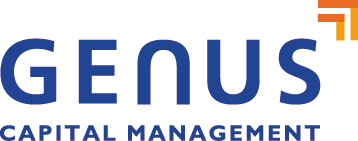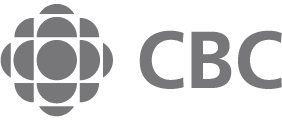Although the threat of COVID-19 continues to linger around the markets, losers are starting to see the light at the end of the tunnel. It’s not the end yet, but the markets are optimistic about a vaccine.
Stephanie Tsui: [00:00:00] Hello, everyone. Welcome to our weekly update this week. We have Wayne with me this time. And as I have a lot of questions, why don’t we jump right into it and ask Wayne. So, Wayne. So this week we have seen the market has continue to edge up despite record COVID cases numbers in many parts of the US. So, like the market seems to shrug off a lot of these numbers. At what point do you think these numbers will become a factor and take a hit on the market?
Wayne Wachell: [00:00:27] Well, there’s three things that I look at, really. And is just one of them three things the market’s looking at here. There’s COVID, there’s the breakthrough in medical, and then there’s what’s happening in the actual economy. Well, you know, concurrently with the COVID this week, the Sun Belt, there’s definitely an issue with the recent break out there. And the good news there is the mortality rates lower than anticipated. So they’re keeping the deaths, the US below a thousand, which is better. Not great, but it’s it’s it’s a semi positive. But, during the coarse of the week there was good news in the medical medical front. Some therapy just came out and Moderna and JJ had good announcements regarding your vaccine therapy. So that was a good news there. On the economic side, the housing sector seems to be coming along. People are staying at home. They’re doing improvement. In my move to bigger homes, there’s more housing stocks and recent retail sales have actually gone back to where they were pre COVID, which is amazing when you think about it. But people are still consuming, is not going to bars, are going on trips and going to movies and hotels. So there’s the consumer still spending. And, you know, thank God for the government money that’s been injected into the economy, which is helping keeping things afloat. And Federal Reserve, of course. So it’s it’s keeping retail sales afloat. And so the kind two the economic numbers and the good news on the medical side help offset the COVID outbreak in the Sunbelt.
Stephanie Tsui: [00:01:56] Thank you. And so apart from the gains that we’ve seen in the market this week, we have also seen a notable rotation from the growth sectors to value sectors. What is really driving that rotation?
Wayne Wachell: [00:02:08] Well, the growth sectors have been doing well because they are tied to COVID technology. People using technology and communication services, health care, because that’s the COVID that the COVID winners and the losers have been the banks, industrials. The cruise ships, the airlines, et cetera, were the value type names. They’re beat up and they’re cheaper. The value area is down between, say, 15 or 20 percent for year to date. And so they definitely have been hurt. And whenever you see some good news in the vaccine vaccination side, they pop. So that’s what happened this week. There was good news from Moderna and JJ on the vaccination thanks to the vaccine. And so that really helped that that the value side moved forward.
Stephanie Tsui: [00:02:48] Ok. That’s good to know. Onto my next question. So with Canada’s with Canada’s massive spending deficit we know of this week and mounting that a federal federal debt level, so many people are worried about how we can operate in such a big deficit. So what do you think would be the implications on the TSX at the Canadian equity market and in particular the Canadian dollar?
Wayne Wachell: [00:03:11] Well, if this went on indefinitely would definitely be an issue. But I think it looks like we’re in a lot of spending until the end of the year. And it’s kind of like a war. I would say in some regards we could have higher deficits in government that’s going to be built up. But our economy is really tied to more to global growth. And as is the Canadian dollar, and we’re seeing global growth starting to do well in Europe. There definitely China is recovering. Europe are spending a lot of money with the US troops there, government spending and their bank is also easing as well. And if you look at the end of the day, look at commodities, copper in particular, Doctor Copper, which is a good sign of the economy, of global growth. It’s been on a real run here. So I think in spite of the deficits read you well, because of what’s going on globally. That’s the biggest factor, both for dollar and for our economy.
Stephanie Tsui: [00:04:01] And so on the credit side, it is generally expected that there may be more credit losses, write downs of bankruptcies to come as the aftermath of the credit crisis unfolds and a potential second wave to come into fall. So how comfortable are we with Canadian credit?
Wayne Wachell: [00:04:18] Well, our models are cement positive and corporate spreads got blown out. They were pre COVID there, about 100 basis points over Canada’s. They went over 300 are back down. Well, 140 over Canada’s right now. So they have come back in. That’s primarily the central bank bringing rates down, allowing a lot of companies to refinance themselves and lower rates. So our models are positive. It’s not an issue right now. Maybe an issue if we get some really bad news in the COVID side. I think here again, longer term lock into the end of the year. I think we’ll have more and more good news on the on the vaccine side. So right now, we’re long in fact, we’ve just increased corporate exposures over the past month.
Stephanie Tsui: [00:04:59] Ok, great. And then related to my previous questions, also a question from one of your dear clients. So commercial mortgage in Spain has always been a rather attractive strategy for yield enhancement. However, with the COVID many people are now working from home and we have seen [inaudible] demand for office and retail spaces. So how safe are these investments now?
Wayne Wachell: [00:05:22] Well, number one, our our money fund is very conservative. The loan to value ratio ratio is 50 percent. It’s also very short term mortgages . So it’s high liquidity that’s rolling over over three or four years. So far, the experience has been pretty good. There’s been no defaults. About 10 percent of the portfolios asked for some interest payment deferrals and just deferrals. I think around two percent for interest payment deferrals and principal deferrals. But so far, so good. They don’t have a lot of exposure to to offices. So I think it’s around 18 percent or something like that. And it’s primarily in small office buildings in the suburbs. On the same thing, on the retail side, 20 percent of the fund is is in retail funds rate, diversified, of course. And there’s no major mall exposure there. It’s primarily grocery stores and pharmacies, which is, you know, which are very much needed right now. So it’s got good exposure. Any new business right now is being written that around five year Canada yields plus around 300 basis points. So let’s around three and a half percent, maybe three, 30 in that range there. So but so far, so good. And with all the liquidity being added, things look pretty good here, I’d say into the end of the year. This goes into next year. There may be more issues, but so far so good. And the good news here is a real estate exposure on the commercial side is very limited and in a better segment.
Stephanie Tsui: [00:06:56] Ok. Thank you so much, Wayne. I think that will give a lot of comfort for a lot of our clients. So I guess that will summit out. And I thank you Wayne for your insight and thank you, everyone, for your time. And so if you have any questions, please e-mail us and we’ll see you next week.











